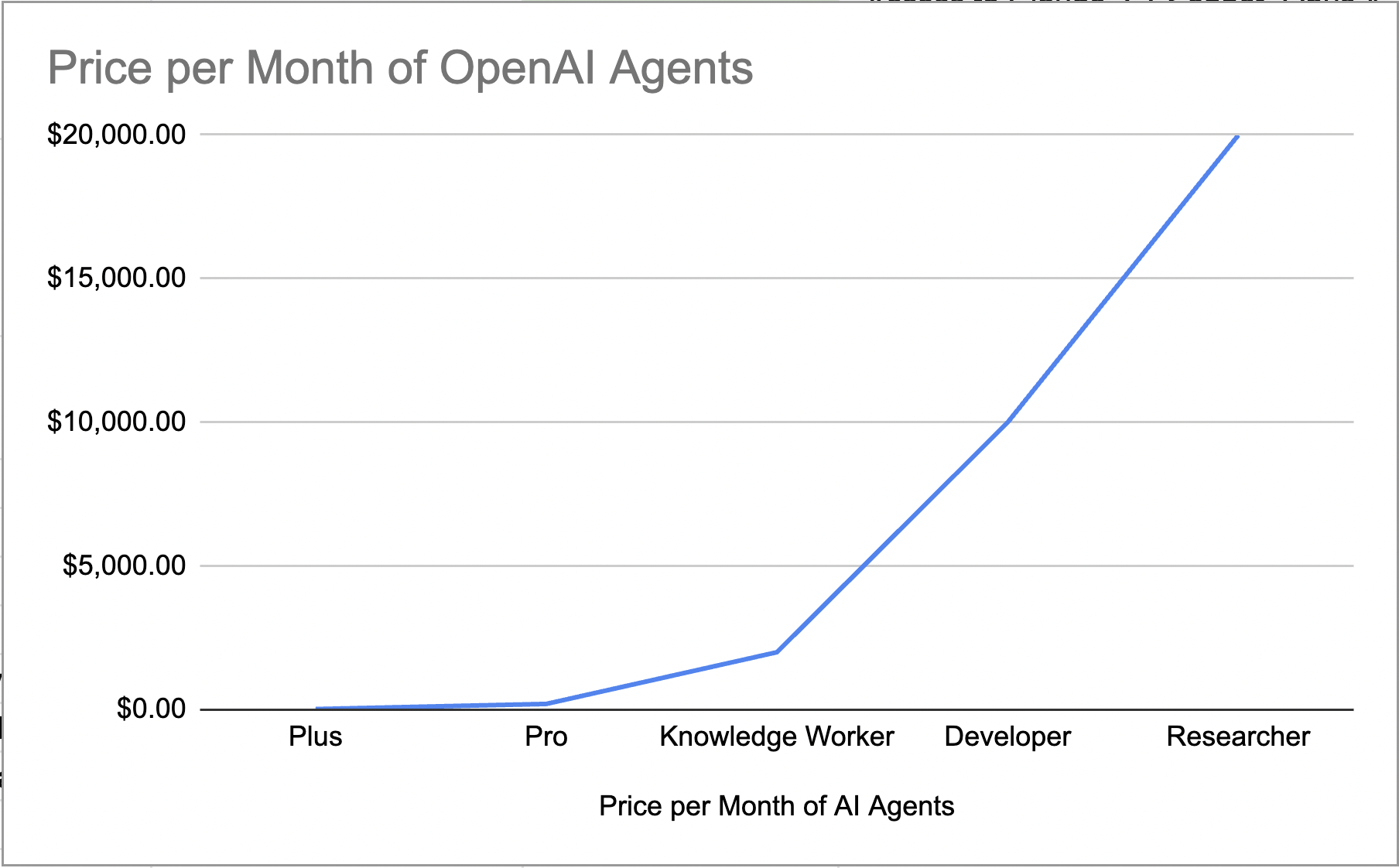Framing and anchoring effects for pricing of pro level AI agents
Steven Forth is CEO of Ibbaka. Connect on LinkedIn
OpenAI has anchored AI pricing at $20 and $200 per month
At Ibbaka, compute and subscriptions to various AI tools and services are now the second largest line item in our expenses. Payments to people, employees, and contractors are still the largest number, but the lines are converging.
We noted with interest, and some alarm, that our favorite service, Perplexity, now offers a Max package (introduced on July 2, 2025), $200 per month. In doing so, Perplexity appears to be following OpenAI’s lead, which has priced its ChatGPT Pro (introduced December 2024) package at US$200 per month. And then there is Cursor (introduced June 16), which prices Cursor Ultra at US$200 per month.
Google has been willing to buck the trend and price Google AI Ultra (introduced May 2025) at US$249.99 per month; there is currently a campaign offering a 50% discount for the first three months.
Generative AI services priced near $200 per month. July 4, 2025.
All this shows the power of an anchor price.
Anchor price refers to a reference point or benchmark price that is deliberately set or displayed to influence how buyers perceive the value of a product or service. This concept is widely used in marketing and pricing strategies, leveraging a psychological effect known as the anchoring bias.
Generative AI services priced at or near $20 per month. July 4, 2025.
OpenAI has been framing prices for AI for the past few years.
Established the API pricing model where prices are charged for input tokens, output tokens, and, for reasoning models, reasoning tokens
Established the $20 per month price point for co-pilots
Established the $200 per month price point for advanced co-pilots
Proposed price points for advanced agents
$2,000 per month for a knowledge worker capable of advanced tasks
$10,000 per month for a software developer agent capable of coding and technical tasks
$20,000 for a Ph.D.-level research agent capable of advanced research
It is fun to graph the Open AI price points. Hmm, an exponential curve. Of course, the right side of this curve is hypothetical at this point, but still. As a knowledge worker who employs developers and researchers, what does this mean for my future cost structure?
How much additional value do I need to be able to create, with AI, to carry these costs?
But if I don’t, will I be left behind?
Price per month of OpenAI agents (real and proposed). July 4, 2025
How to leverage framing for better pricing
One question many are asking is how this framing by OpenAI will impact their own pricing. Has OpenAI set a price ceiling (currently at $20 for most agents, perhaps at $200 for the most advanced agents) or is it possible to reach higher price levels?
Let’s look at the downside first. If your app or agent is a thin wrapper around one large language model (LLM) and you provide no unique data sources (this describes most of what is being built today using vibe coding), you are likely looking at a price between 20% and 50% of ChatGPT. This means we will expect most prices to be between $4.00 and $10.00 per month. Even here, one will need to provide some form of differentiated value beyond what one can get just by using Perplexity, Gemini, ChatGPT, or one of Microsoft’s co-pilots.
Differentiation is key.
Can one possibly get more than $200 per month?
Yes. But not easily. A historical example is the life sciences platform company Veeva. Veeva got its start as a CRM for healthcare built on Salesforce’s Force.com platform. Despite the fact that it was built on a competitor’s platform and was in the same general product category, customer relationship management, Veeva was able to achieve a significant price premium over Salesforce, pricing at $142 to $200 per user, which was about twice what Salesforce was charging at the time. How did it do this?
Specialization, Veeva CRM was designed ground up for pharma sales reps, it was easier to use, had more relevant data, and came with the right reports out of the box
Customer support, the customer support team was built with pharma people who understood the issues and had empathy with users and buyers
Relationships, the founders Peter Gassner (ex Salesforce) and Matt Wallach (ex LexisNexis) had deep networks that they could leverage
The lesson from Veeva can be directly applied to AI app and agent companies. The key will be to drive differentiated value. Create, deliver, and document value in ways that the alternatives do not. A value model will help you do this.
The way you can do this is:
Understand and care about the user, their needs and fears, and the job they want the agent to do
Go deep into a specific use case for a target industry (horizontal apps will find it hard to compete with the companies building foundation models and Perplexity)
Use multiple models (if your app can be built on one foundation model, it is probably not all that differentiated)
Develop unique data sources (use your own agents to rapidly deepen your own data)
Iterate quickly, AI agents and apps need to evolve, and users need to see that more and more value is being delivered to them
Applications and agents that deliver value in ways the alternatives cannot will be able to command premium pricing, and prices much higher than the $200 per month reference point that OpenAI has established will be possible.
Sign up for the valueIQ beta to get early access
Navigating the new pricing environment brought by AI agents? Contact us @ info@ibbaka.com







